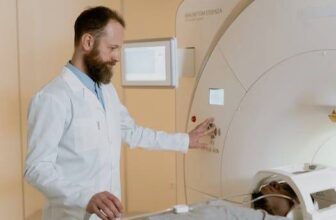Low Uptake of GLP-1 Receptor Agonists: Why They’re Holding Back A1C Goals in Type 2 Diabetes
Exploring the Reasons Behind Low Uptake of GLP-1 Receptor Agonists in Type 2 Diabetes Patients
Type 2 diabetes is a chronic condition that affects millions of people worldwide. While there are a variety of treatments available, one of the most effective is the use of glucagon-like peptide-1 (GLP-1) receptor agonists. Despite their effectiveness, however, the uptake of GLP-1 receptor agonists among type 2 diabetes patients is surprisingly low.
There are several potential reasons for this low uptake. First, GLP-1 receptor agonists are relatively new treatments, and many patients may not be aware of their existence. Additionally, the cost of these medications can be prohibitively expensive for some patients, making them inaccessible. Furthermore, some patients may be reluctant to take a medication that requires regular injections, as opposed to a pill or other form of oral medication.
In addition to these factors, there may be psychological reasons for the low uptake of GLP-1 receptor agonists. Many patients may be reluctant to take a medication that requires regular injections, as this can be seen as a sign of illness or weakness. Additionally, some patients may be hesitant to take a medication that requires regular monitoring and adjustments, as this can be seen as a sign of dependence.
Finally, there may be a lack of education and awareness among healthcare providers about the effectiveness of GLP-1 receptor agonists. Without adequate knowledge of the benefits of these medications, healthcare providers may be less likely to recommend them to their patients.
In order to increase the uptake of GLP-1 receptor agonists among type 2 diabetes patients, it is important to address the various factors that may be contributing to the low uptake. This includes increasing awareness of the existence and effectiveness of these medications, making them more affordable, and addressing any psychological barriers that may be preventing patients from taking them. Additionally, healthcare providers should be educated about the benefits of GLP-1 receptor agonists, so that they can make informed recommendations to their patients.
Examining the Impact of Low Uptake of GLP-1 Receptor Agonists on Achieving Target A1C Levels in Type 2 Diabetes
Type 2 diabetes is a chronic condition that affects millions of people worldwide. It is characterized by high levels of glucose in the blood, which can lead to serious health complications if left untreated. One of the most effective treatments for type 2 diabetes is the use of glucagon-like peptide-1 (GLP-1) receptor agonists. These medications work by stimulating the release of insulin, which helps to reduce blood glucose levels. However, despite their effectiveness, the uptake of GLP-1 receptor agonists is often low, leading to inadequate control of blood glucose levels.
This paper aims to examine the impact of low uptake of GLP-1 receptor agonists on achieving target A1C levels in type 2 diabetes. A1C is a measure of average blood glucose levels over a period of two to three months and is used to assess the effectiveness of diabetes treatment. Studies have shown that GLP-1 receptor agonists can reduce A1C levels by up to 1.5%, which is a significant improvement in glycemic control. However, despite this potential benefit, the uptake of GLP-1 receptor agonists is often low due to a variety of factors, including cost, lack of patient education, and lack of access to healthcare.
The impact of low uptake of GLP-1 receptor agonists on achieving target A1C levels in type 2 diabetes is significant. Studies have shown that patients who are not taking GLP-1 receptor agonists are more likely to have higher A1C levels than those who are taking them. This can lead to an increased risk of developing serious health complications, such as heart disease, stroke, and kidney failure. Furthermore, inadequate control of blood glucose levels can also lead to an increased risk of hypoglycemia, which can be dangerous if not treated promptly.
In conclusion, low uptake of GLP-1 receptor agonists can have a significant impact on achieving target A1C levels in type 2 diabetes. It is therefore important that healthcare providers ensure that patients are adequately educated about the benefits of these medications and that they have access to them. Additionally, efforts should be made to reduce the cost of these medications so that more people can benefit from them.
Investigating Strategies to Increase Uptake of GLP-1 Receptor Agonists to Reach Target A1C Levels in Type 2 Diabetes Patients
Type 2 diabetes is a chronic condition that affects millions of people worldwide. To effectively manage the condition, it is important to maintain target A1C levels. One of the most effective treatments for type 2 diabetes is the use of glucagon-like peptide-1 (GLP-1) receptor agonists. However, despite their effectiveness, the uptake of GLP-1 receptor agonists is often low. This article will explore strategies to increase uptake of GLP-1 receptor agonists to reach target A1C levels in type 2 diabetes patients.
The first strategy to increase uptake of GLP-1 receptor agonists is to educate patients about the benefits of the treatment. Patients should be informed of the potential benefits of GLP-1 receptor agonists, such as improved glycemic control, weight loss, and reduced risk of cardiovascular events. Additionally, patients should be made aware of the potential side effects of the treatment, such as nausea and vomiting. By providing patients with comprehensive information about the treatment, they will be more likely to adhere to the prescribed regimen.
The second strategy to increase uptake of GLP-1 receptor agonists is to provide support and guidance to patients. Patients should be encouraged to attend regular follow-up visits with their healthcare provider to monitor their progress and adjust their treatment plan as needed. Additionally, healthcare providers should provide patients with resources to help them manage their condition, such as diet and exercise plans, and support groups. By providing patients with the necessary support and guidance, they will be more likely to adhere to their treatment plan.
Finally, healthcare providers should consider offering financial incentives to patients to encourage them to adhere to their treatment plan. For example, healthcare providers could offer discounts on medications or provide vouchers for free or discounted services. By offering financial incentives, patients will be more likely to adhere to their treatment plan and reach their target A1C levels.
In conclusion, there are several strategies that can be used to increase uptake of GLP-1 receptor agonists to reach target A1C levels in type 2 diabetes patients. These strategies include educating patients about the benefits and side effects of the treatment, providing support and guidance to patients, and offering financial incentives. By implementing these strategies, healthcare providers can help ensure that patients adhere to their treatment plan and reach their target A1C levels.







